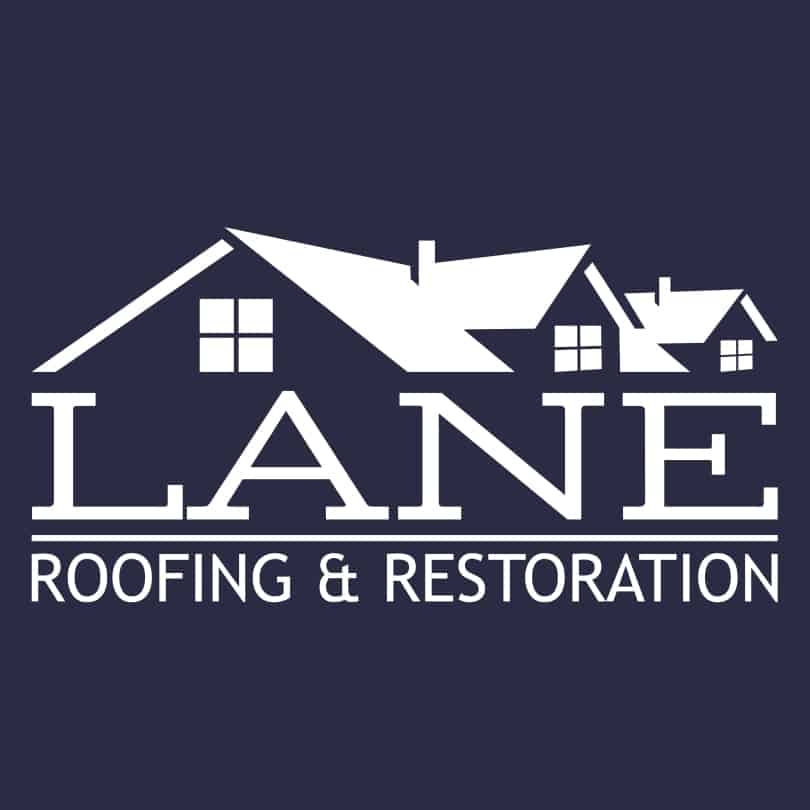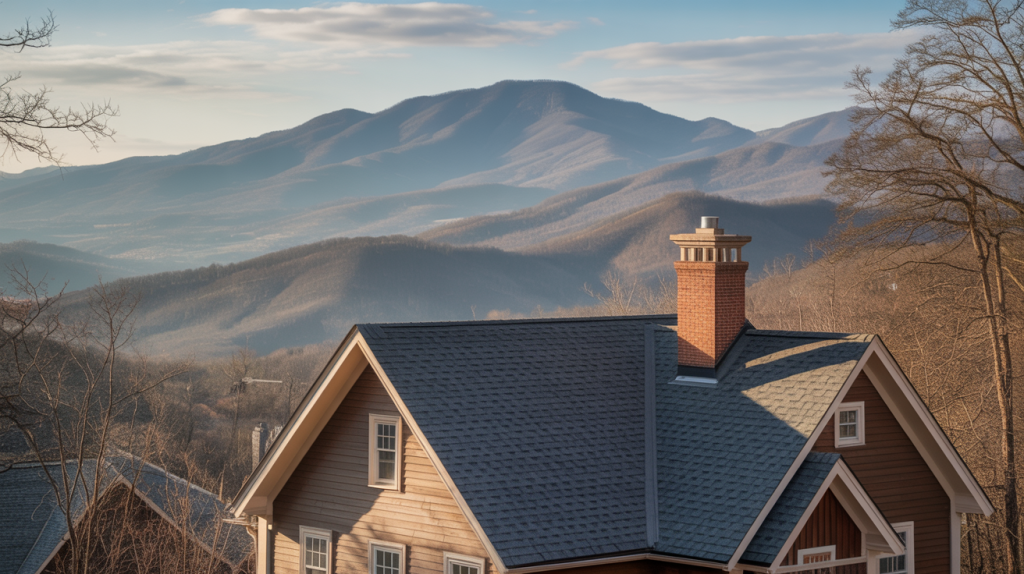Nestled among the ancient Blue Ridge Mountains, Asheville homeowners face unique challenges when it comes to protecting their greatest investment. The distinct four-season climate of Western North Carolina creates a perfect storm of roofing demands that many homeowners don’t fully understand until they’re facing costly repairs. As local Asheville roofing contractors who’ve climbed thousands of roofs throughout the region, we’ve seen firsthand how proper maintenance can dramatically extend roof life despite our challenging mountain weather patterns. By partnering with western North Carolina roofing experts, homeowners can gain valuable insights into preventive measures and necessary upkeep tailored to the region’s specific conditions. Regular inspections and timely repairs not only safeguard against unexpected issues but also enhance the overall value of your property. With the right knowledge and proactive strategies, residents can enjoy peace of mind knowing their roofs are well-equipped to handle seasonal challenges. To navigate these challenges, it’s essential for homeowners to seek advice from experienced professionals who understand the specific demands of their roofs. Our team often shares valuable roof installation tips in Asheville, helping residents choose materials and techniques best suited for the local climate. By prioritizing maintenance and making informed decisions, homeowners can safeguard their investment and enjoy peace of mind year-round. To help homeowners safeguard their roofs, it’s crucial to implement seasonal roof maintenance tips that cater to the specifics of our local climate. Regular inspections in spring and fall can identify potential issues before they escalate, ensuring your roof remains in top condition year-round. By staying proactive and informed, you can avoid unexpected repair costs and extend the life of your roofing system.
Our mountain community experiences everything from heavy summer downpours to occasional winter ice storms, with each season leaving its mark on your roof. The Blue Ridge’s famous humidity, combined with our dense tree canopy, creates the perfect environment for moss growth and moisture-related issues that simply don’t exist in other parts of North Carolina. Understanding these regional challenges is the first step in developing a maintenance plan that works specifically for your Asheville home.
Why Roof Maintenance Matters More in Western North Carolina
The mountain climate of Western North Carolina creates distinct roofing challenges not found elsewhere. Our frequent rain cycles, heavy tree coverage, dramatic temperature fluctuations, and occasional snow and ice events all put unique stresses on roofing systems. Unlike homes in Charlotte or Raleigh, Asheville roofs must withstand a much broader range of weather conditions.
The elevation differences across our region also mean that even homes just miles apart may experience significantly different weather patterns. A property in Weaverville might see completely different rainfall amounts than one in South Asheville, requiring customized maintenance approaches based on your specific microclimate.
Beyond weather, our region’s abundant wildlife – from raccoons to woodpeckers – can cause surprising damage to roofing systems. Many Asheville homeowners don’t realize that a small hole created by an animal can quickly lead to major structural issues if left unaddressed.
Seasonal Maintenance Schedule for Western North Carolina Homes
Spring (March-May)
Spring in Asheville brings heavy rains and pollen, making this the ideal time to check for winter damage and prepare for the wet season ahead. After the last frost, inspect your roof for loose or damaged shingles that may have been affected by freeze-thaw cycles. Clear gutters of pollen, seed pods, and debris to prevent water backup during our frequent spring thunderstorms.
This is also the perfect time to check attic ventilation. Many Asheville homes have inadequate ventilation, leading to moisture buildup during our humid summers. Proper airflow not only extends roof life but can significantly reduce cooling costs in your mountain home.
Summer (June-August)
Summer in Western North Carolina brings intense UV exposure at our higher elevations, along with pop-up thunderstorms that can drop inches of rain in minutes. Check for signs of algae or moss growth, particularly on north-facing roof sections that receive less sunlight.
Look for water stains on ceilings after heavy rains – these could indicate developing leaks that need immediate attention. Our summer thunderstorms often bring high winds, so check for loose or damaged shingles, especially along ridgelines and edges where wind can get underneath them.
Fall (September-November)
Fall is the most critical maintenance season for Asheville homeowners. Our abundant trees create massive amounts of leaf litter that can clog gutters and trap moisture against roofing materials. Clean gutters regularly throughout the season, not just at the end.
Trim back overhanging branches before winter arrives. Snow and ice can weigh down branches, causing them to scrape against and damage roofing materials. Fall is also the ideal time to schedule a professional inspection before winter weather arrives, as repair conditions are optimal in our mild autumn weather.
Winter (December-February)
Winter brings unique challenges to Asheville roofs. While we don’t typically see heavy snow accumulation like northern states, we do experience freeze-thaw cycles that can be particularly damaging to roofing systems. Ice dams can form along eaves when heat escapes from poorly insulated attics, melting snow that refreezes at the roof edge.
After significant snow or ice events, check for proper drainage once melting begins. Use a roof rake to safely remove heavy snow accumulation rather than allowing it to melt and potentially refreeze. Never climb onto a roof during icy conditions – this is when professional help is essential.
Essential Maintenance Tasks for Every Asheville Homeowner
Gutter Maintenance
In Western North Carolina, functioning gutters are crucial to roof health. Our frequent rains mean gutters work overtime directing water away from your home’s foundation and preventing water from backing up under shingles. Clean gutters at least quarterly, and consider gutter guards if your property has heavy tree coverage.
Check downspouts to ensure they’re directing water at least 5-10 feet away from your foundation. The hilly terrain of many Asheville properties can create drainage challenges that require creative solutions to prevent water from pooling around your foundation.
Moss and Algae Prevention
Our region’s humidity and tree coverage create the perfect environment for moss and algae growth. While some homeowners appreciate the rustic look of a slightly mossy roof, these organisms actually trap moisture against roofing materials, accelerating deterioration.
Zinc or copper strips installed near the ridge can help prevent growth by releasing metal ions that inhibit moss whenever it rains. For existing growth, gentle cleaning with appropriate solutions is necessary, but avoid pressure washing, which can damage shingles and void warranties.
Attic Ventilation and Insulation
Proper attic ventilation is particularly important in our climate. During summer, inadequate ventilation can cause excessive heat buildup, warping roofing materials from below. In winter, poor ventilation can lead to condensation that damages insulation and creates the perfect environment for mold growth.
Check that soffit vents aren’t blocked by insulation and that ridge or gable vents are functioning properly. Many older Asheville homes have insufficient ventilation by modern standards, which can significantly reduce roof lifespan.
Flashing Inspection
Metal flashing around chimneys, vents, and roof valleys is often the first place leaks develop. Our freeze-thaw cycles can gradually work flashing loose, creating entry points for water. Inspect these areas carefully for signs of rust, separation from the roof surface, or damaged sealant.
Pay special attention to chimney flashing, as the temperature differences between the heated chimney and cold roof can cause expansion and contraction that weakens seals over time. This is particularly common in older Asheville homes with masonry chimneys.
When to Call a Professional
While some maintenance tasks are suitable for DIY-minded homeowners, others require professional expertise. Our steep mountain terrain often means Asheville homes have complex roof designs with multiple pitches and valleys that make inspection and repair more challenging and dangerous.
Consider professional help for:
– Annual comprehensive inspections (ideally in fall before winter weather)
– After major storms or high wind events
– When you notice interior water stains or active leaks
– If shingles are visibly damaged, curling, or missing
– When moss or algae growth is extensive
– If your roof is more than 15 years old
Professional inspections typically include checking for structural issues not visible from the ground, examining attic spaces for signs of water intrusion, and identifying potential problems before they lead to costly repairs.
Cost-Saving Benefits of Regular Maintenance
While some homeowners see maintenance as an unnecessary expense, it’s actually one of the best investments you can make in your property. In Asheville’s housing market, a well-maintained roof can significantly impact resale value, especially as home buyers become increasingly savvy about requesting inspection reports.
Consider that the average cost of a complete roof replacement in Western North Carolina ranges from $8,000 to $20,000 depending on size, materials, and complexity. By comparison, regular maintenance might cost a few hundred dollars annually but can add 5-10 years to your roof’s lifespan. Investing in energyefficient roofing options can also significantly lower your energy bills, making them a wise choice in the long run. Additionally, these options often come with warranties that further extend their lifespan, providing greater value for your investment. By prioritizing maintenance and exploring energy-efficient solutions, homeowners can not only protect their roofs but also enhance their overall home efficiency.
Many roofing warranties actually require regular maintenance to remain valid. If you skip maintenance and experience a major issue, you might find your warranty claim denied if the manufacturer determines the problem resulted from neglect.
Warning Signs Asheville Homeowners Shouldn’t Ignore
Our experience servicing roofs throughout Western North Carolina has taught us that certain warning signs are particularly relevant to our region:
– Granules from asphalt shingles collecting in gutters (especially common after hail)
– Water stains on ceilings or walls after our heavy mountain downpours
– Shingles that are curling, cracking, or missing altogether
– Sagging areas on your roof deck
– Daylight visible through roof boards when in the attic
– Higher than normal energy bills (indicating possible insulation or ventilation issues)
– Excessive moisture or frost in the attic during winter
The sooner these issues are addressed, the less expensive the solution will typically be. What might be a simple repair can quickly escalate to major structural work if water continues to penetrate your home’s envelope.
Insurance Considerations for Western North Carolina Homeowners
Our mountain weather patterns sometimes include severe events like hailstorms or high winds that can damage roofing materials. Understanding your homeowner’s insurance coverage regarding roof damage is essential before you need to make a claim.
Document your maintenance efforts with photos and receipts, as insurance companies often look for evidence that you’ve properly maintained your roof when assessing claims. After severe weather, have your roof professionally inspected even if no damage is immediately apparent – some issues may not become visible until months later.
Insurance companies are increasingly offering discounts for impact-resistant roofing materials, which can be a wise investment in our region where occasional hail occurs. When replacing your roof, ask about these options and potential premium reductions.
Embracing Proactive Roof Care in Western North Carolina
Living in the beautiful mountains of Western North Carolina comes with both privileges and responsibilities. Our unique climate requires a thoughtful approach to home maintenance, particularly when it comes to your roof. By understanding the specific challenges our region presents and implementing a consistent maintenance schedule, you can protect your investment and avoid costly emergency repairs.
We’ve seen countless situations where simple, inexpensive maintenance could have prevented major damage. As your neighbors and local roofing experts in Asheville, we encourage you to take a proactive approach to roof care – your home will thank you with years of reliable protection against our mountain elements.
For those feeling overwhelmed by maintenance requirements, remember that establishing a relationship with a trusted local roofing contractor means you’ll have someone familiar with your home’s specific needs who can provide tailored advice as seasons and years pass. Your roof is your home’s first line of defense – treat it with the care it deserves.

